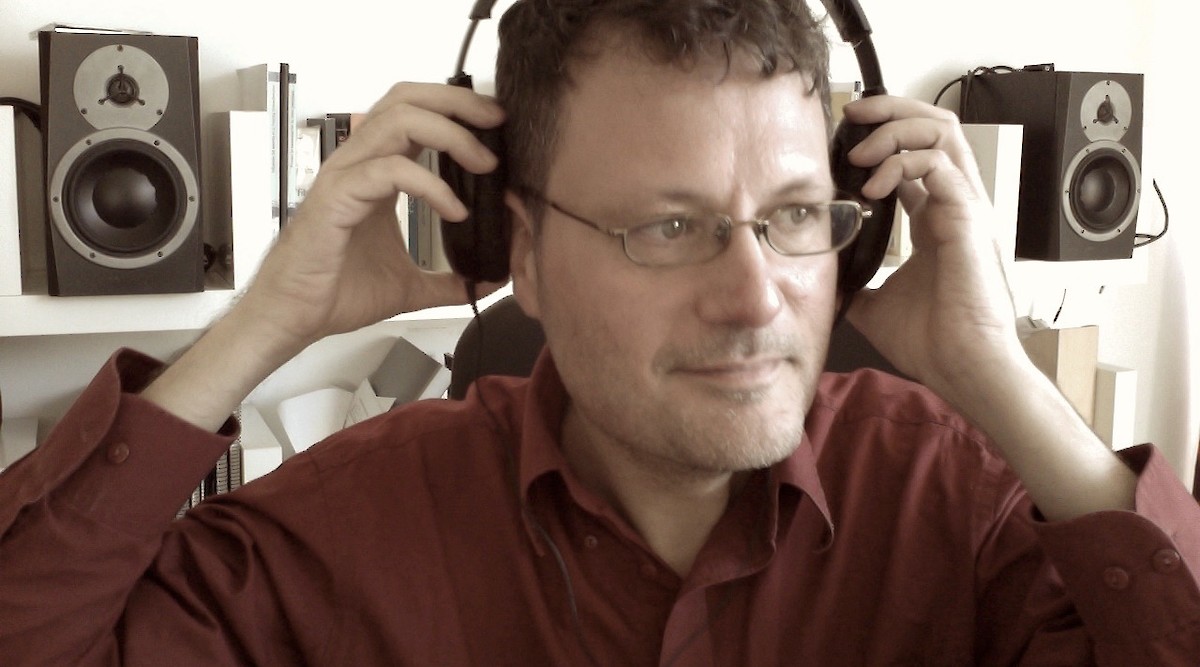Blas Payri

We spoke with Dr. Blas Payri, a Universitat Politècnica de València professor of sound design, film sound analysis and film music in postproduction, who has long admired Canadian dance, film and screen dance.
Payri, who works in soundscape, electroacoustic music and screen-dance, mentors a filmmaking workshop and screens his latest short movie at the 2019 edition of the Contact Dance International Film Festival in Toronto.
Tell us a little bit about you and your work. How is the relationship between the two of them? Explain to us the journey that has brought you to where you are professionally. What do you love about your work?
I am now mainly a screendance filmmaker, where I elaborate the filming, the sound and music and the editing and postproduction. My artistic background and training is mostly in sound art and music composition, and my first pieces were trying to extend the sound composition into the realm of the image through dance or corporal expression. I also have a scientific and technical background, and did my doctoral and post-doctoral studies in the area of vocal timbre perception and modeling. My computer science and engineering studies have also allowed me to develop software to help artistic creation.
Also now, as a professor of audiovisual communication at UPV, I can combine my academic and artistic activities to develop creative results with the students that are based on a solid technique and analysis.
Tell us an anecdote about your initial stages as an artist.
At one point we were recording a video-dance with the dancer wearing only a nightgown and moving frantically while I was holding the camera on the stabilizer. We were recording in front of an old building and people called the police fearing it was a domestic violence… and when the police came, we had to give a lengthy explanation about what we were doing, the meaning of video-dance and that no harm was being done and no one was crazy.
Describe your workspace. What can we find in your “workshop”?
My workspace is mostly my computer where I do all the editing and digital-postproduction. Then the actual recording of the body in movement can take place in very different environments from natural surroundings to theatrical sets.
What is unique about your work?
This is a hard question to answer, as we could say that all works are unique. In my case, I try to create meaningful works, that have a profound connection with what I try to convey, rather than making unique works. A trait that is common in some pieces I have made is the use of motion blur, and also the multi-layering of the images to create new textures and visual meaning.
What has brought you to Canada? What is your relationship with this country?
In my case, it is now the Contact Dance Film Festival, taking place in Toronto. I have a long admired Canadian dance, film and screen dance, both from the French-speaking and English-speaking areas.
Do you have any new projects in mind? Professionally speaking, which direction are you taking?
Too many projects in mind. The direction I want to take is concerned with creating well-thought works, that are really meaningful, and avoid a tendency to try to use all the material I record for pure experimentation.
Which object would you bring to a desert island or a secluded cabin in the forest?
A phone or radio set that can communicate via satellite.
What did you want to be when you grew up?
In an early stage, I wanted to be a driver of blue trains (I had traveled from Valencia to Barcelona in a blue train and I had found this color deeply beautiful). Later I always wanted to have a combination of academic research and creative production –first in music, later in video– which is what I ended up doing after some meandering.
A special place for you in Spain?
Turballos, in the county of Cocentaina, Alicante –the farm I grew up in. Also the Cabo de la Nao and Jávea, on the Mediterranean Coast.
What song is stuck in your head?
It depends on the day and the mood, but most often I will have something from Brahms stuck in my head: an intermezzo, or a concerto or some lied.
Which book do you carry in your backpack?
I am currently carrying a book on economics and economy history (I know, that’s not very romantic or artistic).
Tell us about a special movie for you?
Many movies are special for different reasons: some resonate with a specific personal life issue, some for their beauty. Vertigo by Hitchcock is probably one of the movies that I have watched time and again with renewed interest.
Tell us about a special show/performance for you?
The Rite of Spring by Pina Bausch, and many of the works by Martha Graham, to cite some of the well-known dance shows.
And an artwork piece?
Portraits by Francis Bacon Pope have inspired me for screendance making (a current project), and I also love the paintings by Nicolas de Staël. Three screendance works that have really impacted me come from Canada: Lodela (1996) by Philippe Baylaucq, Pas de deux (1968) by Norman McLaren, and a little-known short documentary called Source (2011) by Pepita Ferrari –all of them available at the Office National du Film.
If you could change something –anything– what would you change?
So many things that I would change… but mostly, to put aside distractions from a true creative work.